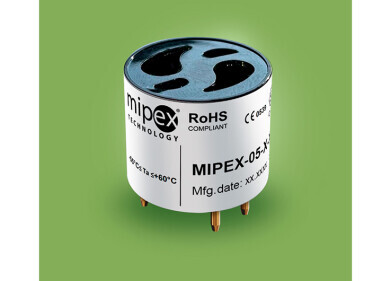Gas Detection
What Gases Do Detectors Look For - And Why?
Nov 30 2022
It’s incumbent that site owners and employers avail themselves of everything they need to know regarding gas detection, so as to guarantee a safe and secure working environment for all of their staff. Of course, the particular gases that require monitoring will vary from industry to industry and so too will the equipment used to detect them.
Having said that, there are certain gases which are more commonly monitored in industrial, commercial and public settings than others. While this article does not pretend to provide a comprehensive list of which gases detectors look for by any stretch of the imagination, it is a concise introduction to the subject.
Oxygen (O2)
Given that oxygen is vital to sustaining all human life, it’s imperative that the atmospheric concentration of O2 does not drop between 19.5% in any environment. This is especially salient in confined or enclosed spaces, where oxygen levels can quickly become depleted simply through respiration or combustion, or else via displacement from other gases. At the same time, it’s important that oxygen concentrations remain below 23.5%; above that threshold, the gas becomes a flammable risk and is detrimental to human health.
Carbon monoxide (CO)
Dubbed the “silent killer”, carbon monoxide is both odourless and colourless, meaning it’s difficult to ascertain whether a leak has occurred. However, even short-term exposure to high levels of CO can result in death, which is why carbon monoxide detectors are a legal requirement in homes and businesses around the country. It is produced as a result of internal combustion engines, fuel stoves and heaters placed in poorly-ventilated locations.
Methane (CH4)
Present in all four alchemical elements, methane is a commonly produced gas at oil refineries and other chemical or petrochemical processing sites. Although relatively non-toxic, it can quickly displace oxygen and contribute to asphyxiation, while it’s also extremely flammable and can pose a fire risk. What’s more, it’s very damaging to the environment and is a leading cause of global warming, so methane leakages are anathema to a site’s carbon profile.
Hydrogen sulphide (H2S)
Known colloquially as the “rotten egg gas”, hydrogen sulphide carries a distinctively unpleasant smell that is a direct product of how it’s made – via the decomposition of organic matter. While this odour normally alerts humans to its presence, it can overpower the olfactory glands in high concentrations and thus render them useless. It’s both toxic and flammable and can cause swift death when an individual is exposed to high levels.
Refrigerants
From cold storage centres to commercial air-conditioning units, refrigerants are a common gas in a wide variety of settings. However, it’s not always immediately apparent if a leak has occurred and if allowed to go undetected, it can not only damage a business’ bottom line by consuming far more energy than is necessary, but it can also cause more serious harm to the equipment surrounding it. Meanwhile, certain refrigerants are dangerous to human health, while others are bad for the environment.
To learn more about the various gases monitored by gas detectors, check out The CoGDEM Guide to Gas Detection, a comprehensive book on the subject which is available to buy online now.
Digital Edition
AET 28.2 April/May 2024
May 2024
Business News - Teledyne Marine expands with the acquisition of Valeport - Signal partners with gas analysis experts in Korea Air Monitoring - Continuous Fine Particulate Emission Monitor...
View all digital editions
Events
Jul 30 2024 Jakarta, Indonesia
China Energy Summit & Exhibition
Jul 31 2024 Beijing, China
2024 Beijing International Coal & Mining Exhibition
Aug 07 2024 Beijing, China
IWA World Water Congress & Exhibition
Aug 11 2024 Toronto, Canada
Aug 25 2024 Stockholm, Sweden and online









.jpg)








